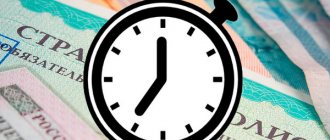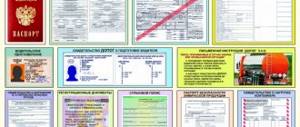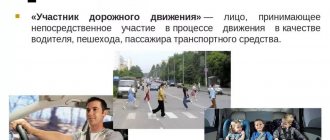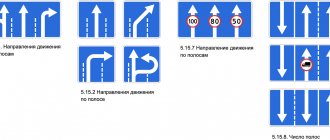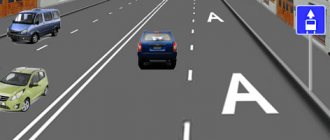The worst consequences of a car accident are the loss of life. Accordingly, the punishment for the culprit of such an accident is harsh, and it is regulated by the Criminal Code of the Russian Federation. Of course, all accidents are different, the driver may be subject to circumstances that mitigate or aggravate the guilt, therefore, in each specific case, the court chooses the preventive measure after it has read all the materials of the case and listened to all its participants.
Exactly what the punishment for a fatal accident will be depends on the behavior of all participants in the process at three main stages: at the scene of the accident, during the criminal investigation and at trial.
Legal standards
The driver's liability for the death of participants in an accident is determined by current regulations. Punishment depends on many aspects, the main one being the severity of the damage caused.
Criminal Code
Article 264 of the Criminal Code of the Russian Federation on road accidents with a fatal outcome contains information about what the culprit faces in a fatal accident.
This regulatory document describes the penalties that are provided for the deprivation of life of a road user through negligence or against the background of intentional actions. Here are the main signs of a crime, on the basis of which the motorist is considered guilty. The article of the Criminal Code of the Russian Federation on road accidents with a fatal outcome also considers measures against persons who provoked road accidents with several deaths.
Determination of guilt
Not all road fatalities are considered crimes. For example, there are known situations when drivers of vehicles experienced cardiac arrest while driving, as a result of which the car lost control. In this case, third parties who were in close proximity to the victim cannot be held to blame for the accident.
It is important to know! To confirm the crime, law enforcement officers are conducting a comprehensive investigation. It involves a number of activities and examinations to determine the relationship between the driver’s actions and the results of the incident.
When is an internal investigation carried out?
When is an internal investigation necessary? For many drivers, this question remains a mystery, as well as why conduct an additional investigation if the accident has already been examined by the traffic police.
Almost every company that has units of transport equipment on its balance sheet also has its own security system. Therefore, such organizations have internal inspectors who teach drivers how to act correctly in order to prevent an emergency situation on the road.
Expert opinion
An employee who is entrusted with driving a company car (or other transport) is a financially responsible person, therefore an internal check is mandatory. The purpose of the audit is to confirm/refute the presence of guilt in causing material damage to the company. Moreover, an internal check is carried out even if the driver is not brought to legal responsibility by law enforcement agencies.
An internal investigation at an enterprise is necessary to determine whether the motorist is at fault in a traffic accident and whether he should be held accountable.
Causes of fatal accidents
According to statistics, tragedies most often occur due to gross violations of traffic rules. Generally accepted rules, the observance of which is mandatory for every driver, are intended to reduce the number of accidents in general. Accidents with fatalities are evidence that traffic rules were violated.
Factors surrounding the incident include:
- Driving a vehicle while intoxicated;
- Speed limit violation;
- Driving at a prohibiting traffic light;
- Failure to comply with the rules for crossing pedestrian crossings;
- Poor quality of road surface and markings;
- Technical malfunctions of the vehicle;
- Failure to use seat belts.
Thus, numerous reasons can lead to death on the road. Provoking factors are determined by studying the scene of the incident. In the future, these data affect liability for fatal accidents.
Road accident investigation report
The main document confirming the conduct of an internal investigation at the enterprise is the act of investigating an accident at the enterprise. This document consists of several separate parts, each of which contains comprehensive information about what happened:
- The first part contains information about the members of the commission authorized to consider the circumstances of the traffic accident and the actions of the driver. The same part contains information about all participants in the accident and vehicles. It is advisable here to describe in general terms the circumstances of what happened.
- The second part of the document must contain information about the driver’s condition. As evidence, a certificate of passing the commission before departure on a flight or a document on a medical examination directed by traffic police officers can be attached. If available, a route map must be attached. In the second part of the act, you can indicate whether the driver violated traffic rules.
- The third part of the official investigation report contains information about the condition of the road surface on the section of the route where the accident occurred. At the same stage, you can indicate what condition the traffic signs were in, whether those involved in the accident had the opportunity to look at the signs.
- The fourth part of the act contains information about the driver who was driving the vehicle. In particular, the document must contain information about the age of the motorist, his driving experience (on this particular car and in general), the state of the employee at the time of the accident (mental and physical), information about passing a medical examination, whether he has previously been involved in road traffic accidents. incidents.
- The fifth part of the accident investigation report contains information about the vehicle. The document must indicate the year of manufacture of the car, license plates and other technical characteristics of the car.
- The sixth part of the document is the conclusions drawn from the investigation and recommendations for improving the level of security.
- The final part of the document contains general conclusions regarding the investigation of the circumstances of the traffic accident.
The document must be drawn up taking into account all required parts.
Penalties
By reading Article 264 of the Criminal Code of the Russian Federation on road accidents, you can find out what the driver faces if he is found guilty of the crime he is charged with. For death as a result of an accident, even through negligence, a motorist will face civil and criminal liability.
Attention! In the first case, we are talking about compensation for damage to the injured party. If bodily injuries are caused that lead to the death of the victim, the driver will have to compensate for moral damages. Typically, such a payment is made by the insurance company where the culprit took out a compulsory motor liability insurance policy.
Criminal liability provides for the following punishment options:
- If the driver was sober. Imprisonment for up to 4 years or correctional labor, confiscation of rights for up to 3 years. The opportunity to hold certain positions is excluded.
- If the culprit is drunk. In such cases, the penalty is imprisonment for up to 7 years. The minimum period of restriction of freedom is 2 years. After release, the driver will be prohibited from driving and holding certain positions for another 3 years.
- Road accident with several fatalities. If a traffic violation led to the death of more than one person, but the culprit was sober, he faces up to 7 years in prison. In this case, many circumstances are taken into account, including the number of victims. If the driver was drunk, then for an accident resulting in the death of a person they will be given up to 9 years.
It should be noted that the culprit of the accident can be considered drunk not only if he drank alcohol before the incident. If he refuses to undergo a medical examination, he is automatically considered drunk.
When is a traffic violation classified as a crime?
The presence of aggravating circumstances may play against the driver:
- alcohol or other intoxication;
- lack of rights to drive a vehicle or deprivation of his rights at the time of the accident;
- the presence of technical faults in the car that caused the accident, which could have been discovered during a preliminary inspection before leaving the car.
If the driver provides information that does not coincide with reality, the preventive measure against him will be tightened, and he may also be charged with knowingly giving false testimony.
Aggravating and mitigating circumstances
When carrying out investigative measures, factors that accompanied the accident are taken into account. In many cases, they influence the outcome of the case and the final verdict against the culprit. For these purposes, a set of examinations and checks is carried out aimed at determining the details of the incident. If it is proven that the driver did not have the opportunity to prevent the collision, he may be released from criminal liability.
Mitigating circumstances include the following:
- Pregnancy;
- Having small children or close relatives who need care;
- Voluntary compensation for material and moral damage.
It is important to know! Sometimes unfavorable weather conditions and violations of traffic rules by the victims are recognized as mitigating circumstances. Also included in this category are poor quality pavement, improper operation of traffic lights, and lack of road signs.
A more severe punishment is faced if there are aggravating factors:
- The driver attempted to escape from the scene of the accident;
- The culprit was driving with an invalid license or without it;
- The accident occurred due to exceeding the speed limit;
- The driver did not allow a pedestrian to pass at a zebra crossing or drove through a prohibiting traffic light;
- Minors were injured in the accident;
- The culprit was detained in a state of intoxication.
Also considered an aggravating circumstance are cases of accidents involving a driver who has similar drives in the past. The above criteria indicate that the culprit is a persistent offender and deserves punishment. Thus, the consequences of a fatal accident for a driver depend on the presence of mitigating and aggravating circumstances.
What does judicial practice say?
The statistics of court cases in this category are such that the number of fatal accidents is decreasing, but remains at a high level. The main causes of road tragedies are traffic violations and alcohol consumption by drivers.
If law enforcement agencies recognize mutual guilt, this means that it may be:
- equivalent - 50/50;
- unequal - 25/75 or otherwise.
In the case of equivalent fault, none of the participants in the road accident has the right to claim insurance compensation, i.e. both culprits will repair the cars themselves and at their own expense. In case of equal fault, the driver whose fault is less will receive incomplete compensation. It is the drivers who are accused of mutual guilt who most often turn to the judiciary.
If the driver of the vehicle is found guilty, it is possible to recover material damages and moral damages.
Material damage is subject to recovery from the guilty person on the basis of Art. 1064 of the Civil Code of the Russian Federation. If the culprit of the accident has a valid MTPL policy, the insurance company with which the contract is concluded will pay compensation for damage. If the policy is invalid or overdue, the damages are paid by the culprit of the accident by court decision. The guilty party is also obliged to pay moral damages to the injured party on the basis of Art. 1100 Civil Code of the Russian Federation.
There is a situation in which only a court can award compensation to the injured party because the insurance company refuses to pay. This is a non-contact incident. For example, if another driver interfered with your movement, and to avoid a collision, you avoided the impact and crashed into a pole. This accident is registered exclusively by a traffic police officer, and the documents indicate the cause of the collision under Art. 12.14 Code of Administrative Offenses of the Russian Federation. In order for the court to satisfy the plaintiff’s demands in this case, it is necessary:
- collect eyewitness testimony;
- provide recordings from video cameras, video recorders;
- request documents prepared by law enforcement agencies.
Judicial practice shows that quite often the court recovers damages in full from the driver causing the interference.
The more serious the consequences of a traffic accident, the more important it is for the parties to conduct an investigation. In case of death, the investigation into the circumstances of the accident is carried out during the preliminary investigation, and the driver’s guilt is determined by the court. The degree of responsibility depends on the evidence obtained by the investigation.
The specificity of the investigation of a fatal accident lies in the need to use special expertise:
- automotive technical;
- traceological;
- road surface;
- technical condition of the vehicle.
When investigating an accident, a significant role is played by the qualified actions of a lawyer who will be able to professionally and competently determine defense tactics by analyzing the primary materials of the criminal case and the video recording of the car DVR. The investigation into the fatal accident is being conducted by traffic police officers and investigators. But at enterprises that have created their own security services, a different procedure for conducting investigations is in effect, for which 5 days are allotted. If there are dead, this period is extended.
The basis is an order indicating the responsible person and the deadline for completing the procedure. If a business is not properly investigated, it will not be able to receive compensation for damage to its property. The driver must immediately inform his management about the incident so that a company representative can go to the scene of the accident and correctly fill out the relevant documents.
The procedure for investigating a traffic accident at an enterprise is as follows:
- the person responsible for safety arrives at the scene of the incident;
- an accident investigation report is drawn up, regardless of the report drawn up by traffic police officers, it reflects all the data about the accident to recreate the full picture of what happened;
- the representative interviews eyewitnesses, his role is to collect information to protect the interests of the company, not the driver;
- taking photographs or video recordings during complex, extensive accidents;
- The investigating officer has the right to obtain information from law enforcement agencies.
From the traffic police officers, the company representative receives copies of certificates, protocols, and documents. The accident investigation commission, based on the information collected, assesses the circumstances:
- quality of road surface;
- weather conditions on the day of the incident;
- the driver’s condition, his characteristics, compliance or non-compliance with traffic rules in such situations.
After investigating an accident at the enterprise, a report is drawn up reflecting all the facts. If the driver’s guilt is proven, he will bear financial and criminal liability.
How is a vehicle examined during a fatal accident investigation?
The vehicle remaining at the accident site must be thoroughly inspected:
- the front part of the car is examined, since more often than not traces of blood, hair, clothing remain on the bumper, hood, dents and scratches appear on parts;
- then the side parts of the car are inspected;
- if signs are detected that a car has driven over the body, they look for signs of impact on the bottom of the car;
- After completing the previous steps, it is necessary to check the technical condition of the machine. If the car does not perform perfectly, the driver will be severely punished.
We recommend contacting our experienced attorneys by phone or online with any questions you may have regarding a fatal accident investigation.
Is reconciliation possible?
If the parties reach an agreement, the person responsible for the incident can avoid punishment. However, this is only realistic if the victims do not have any claims against the driver. The motorist who caused the fatal accident must pay compensation, after which a reconciliation agreement may be possible.
Attention! The victim side submits a corresponding application to the court or law enforcement agencies. The concluded agreement must reflect all the reasons and details of such a decision. As a result of this, investigative measures against the perpetrator are terminated, and he is released from punishment.
Fatal accidents are a common occurrence that occurs due to non-compliance with traffic rules and other factors. In most cases, drivers are found guilty of the incident. There is criminal liability for the death of a person due to a road accident. The punishment is a prison term, correctional labor and a number of other restrictions.
Payments under OSAGO
Persons injured due to a car collision have the right to receive monetary compensation. According to Article 12 of Federal Law No. 40-FZ dated April 25, 2012, payments are made if victims of an accident:
- received damage to their property - up to 400 rubles;
- lost income;
- incurred funeral expenses;
- lost their breadwinner.
According to clause 3 of Article 12 of Federal Law No. 40-FZ “On Compulsory Motor Liability Insurance” dated April 25, 2002, if a disability is assigned, then compensation for harm is calculated in the following amounts:
- first - 500 thousand rubles;
- second - 350 thousand. rub.;
- third - 250 thousand rubles;
- disabled child - 500 thousand rubles.
Under compulsory motor liability insurance, money is paid not only for receiving disability. Injuries caused are also subject to payment. The magnitude depends on the location and severity.
It happens that an insurance company refuses to make a payment for the following reasons (Article 12, paragraph 25, Federal Law No. 40-FZ dated April 25, 2002):
- deliberately staged accident;
- established fact of driver drunkenness;
- The vehicle was driven without a license;
- the driver was not indicated in the MTPL policy;
- the motorist was transporting uninsured dangerous goods that caused the collision;
- an attempt to obtain compensation only for moral damage and lost profits.
Attention
The driver has 3 years to notify the insurer about an accident involving victims (when drawing up a European protocol, participants have only 5 days to notify the insurance company, Chapter 3, clause 3.8, Regulations on the rules of OSAGO). He must attach a copy of the accident report and documents for the car to the application. After 20 days, he will be paid compensation (Article 12, paragraph 21, Federal Law No. 40-FZ dated April 25, 2002).
The MTPL policy provides for payments only to the injured party, in contrast to CASCO, which makes it possible to receive compensation for the culprit of the traffic accident. According to Article 13 of the Federal Law “On Insurance of Civilians”, the following categories of citizens can receive monetary compensation within the framework of the MTPL insurance policy:
- dependents of the deceased person who were in his full care (disabled and minor relatives);
- a child born before the accident or shortly after it occurred;
- close relatives of a deceased person who have received incapacity for work for five years from the date of the accident and death of the relatives;
- persons appointed as guardians of the deceased person.
To receive monetary compensation, you must complete the following steps:
- proper recording of road accidents;
- calling an ambulance to confirm the death of a person;
- obtaining a traffic police certificate and copies of necessary documents from the investigator/inquiry officer;
- transfer of received documents along with the application to the insurance company.
What to do if a criminal case has been opened for a fatal accident?
Find a good lawyer! Pedestrians are sometimes to blame for fatal accidents. In any case, the measure of responsibility is established by the court when considering with the involvement of the prosecution and defense parties, based on the materials of the criminal case.
Contact our qualified lawyers at the pre-trial investigation stage, when evidence is being collected. They will have time to study and analyze the case and help collect evidence of the driver’s innocence in order to dismiss the criminal case.
ATTENTION!
Due to recent changes in legislation, the information in this article may be out of date! Our lawyer will advise you free of charge.
What determines criminal liability for a fatal accident?
To impose a punishment, it is necessary to have evidence confirming the fact of an action with signs of a crime. The length of criminal punishment depends on:
- conclusions of a forensic expert;
- the severity of the harm caused;
- characteristics of the accused;
- the presence of aggravating or mitigating factors.
Important!
If the driver is to blame for an accident that causes harm to the health of the passengers of another vehicle, he is also responsible for all the grave consequences of what happened to them. To hold the perpetrator accountable for causing injury to a pedestrian, it is enough to establish that the driver violated traffic rules.
If a collision with a pedestrian was made while exceeding the speed limit limited by road signs, the driver is responsible for failure to control the safety of the vehicle.
Cases of complete release from liability
When assigning punishment, a judge can be guided only by those types of liability that are provided for in a specific article. It is extremely rare that in the presence of a large list of mitigating circumstances and in the absence of aggravating factors, as well as when drawing up a settlement agreement between the violator and the relatives of the deceased person, the violator may receive a punishment less than that provided for by the norm of the current article. In addition, the following measures may be used when assigning responsibility:
- grant of parole;
- correctional period.
This means that even when a criminal penalty is imposed, the offender does not always bear full responsibility.
The only way to completely avoid punishment is an amnesty.
Administrative liability in case of an accident
Punishment in accordance with the Code of Administrative Offenses of the Russian Federation occurs only if, as a result of an accident, material damage was caused, as well as mild or moderate harm to health. The severity of harm to health is determined by a forensic expert based on an examination and the duration of the recovery period of the victim, but in Art. 12.24 of the Code of Administrative Offenses of the Russian Federation provides some explanation regarding the differences between these two degrees:
- Minor harm is a short-term health disorder or a minor permanent loss of a person’s ability to work (mild concussion, dislocations and hematomas, bruises). Loss of ability to work, confirmed by sick leave, ranges from 1 to 20 days;
- Moderate harm is a long-term but non-life-threatening health disorder, as well as significant permanent loss of working capacity of less than one third (moderate concussions, serious injuries and fractures). Loss of ability to work on sick leave is 21 days or more.
What is the administrative liability in case of an accident in which a person was injured?
- For minor harm to health - a fine in the amount of 2,500 to 5,000 rubles or deprivation of driving license for a period of 1 to 1.5 years;
- For harm to health of moderate severity - a fine in the amount of 10,000 to 25,000 rubles or deprivation of driving license for a period of 1.5 to 2 years.
A victim of an accident has the right to receive compensation for material damage or damage to health on the basis of compulsory motor liability insurance. The amount of insurance compensation is within 500 thousand rubles (for treatment). No more than 400 thousand rubles will be allocated for car restoration in 2021.
If treatment costs exceed the specified amount, then the participant in the accident himself will be required to pay the missing money to the victim, from his own pocket.


